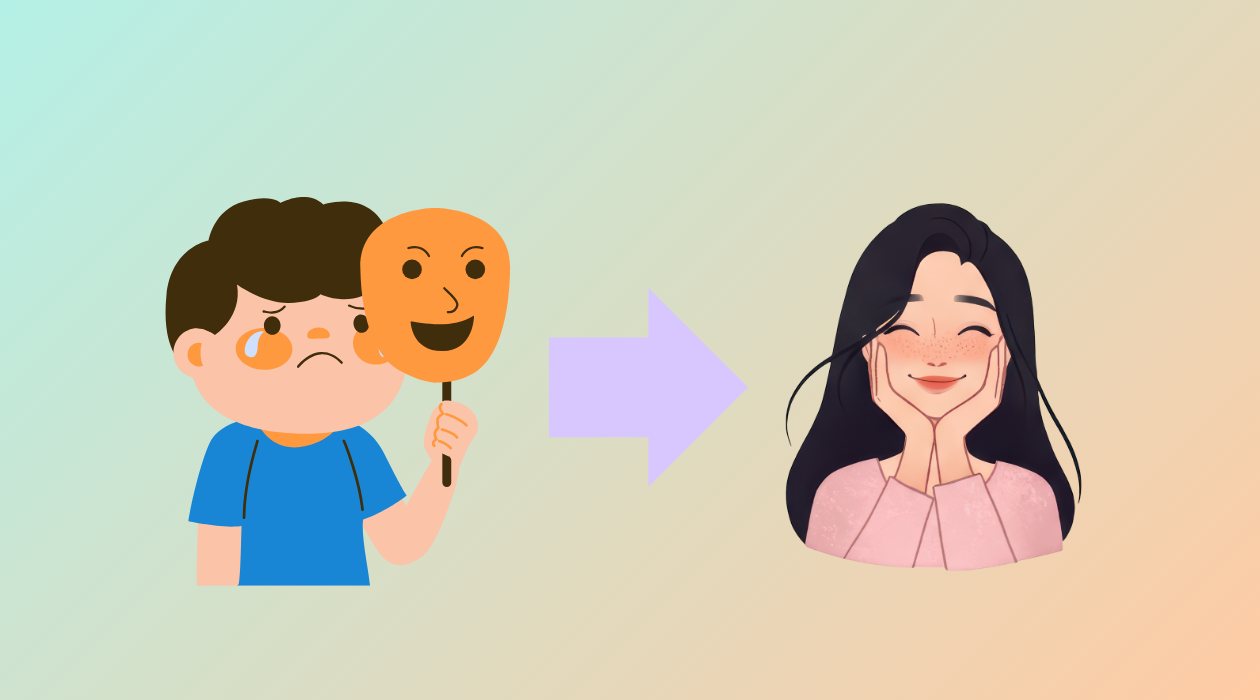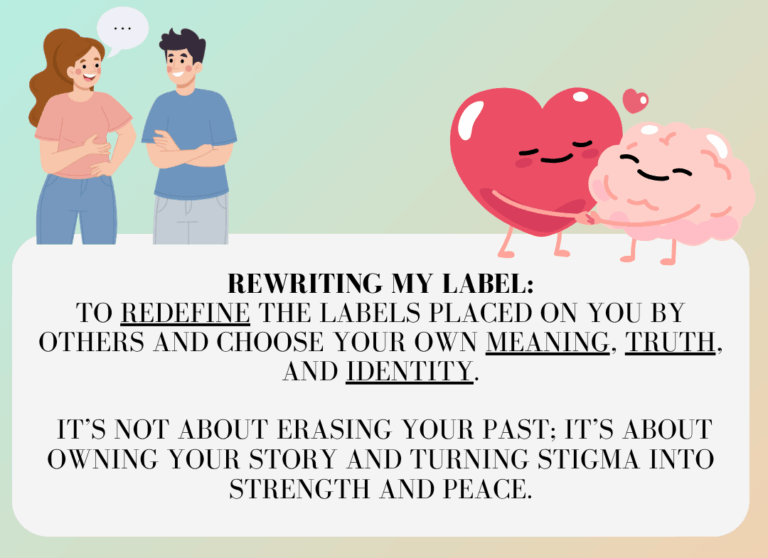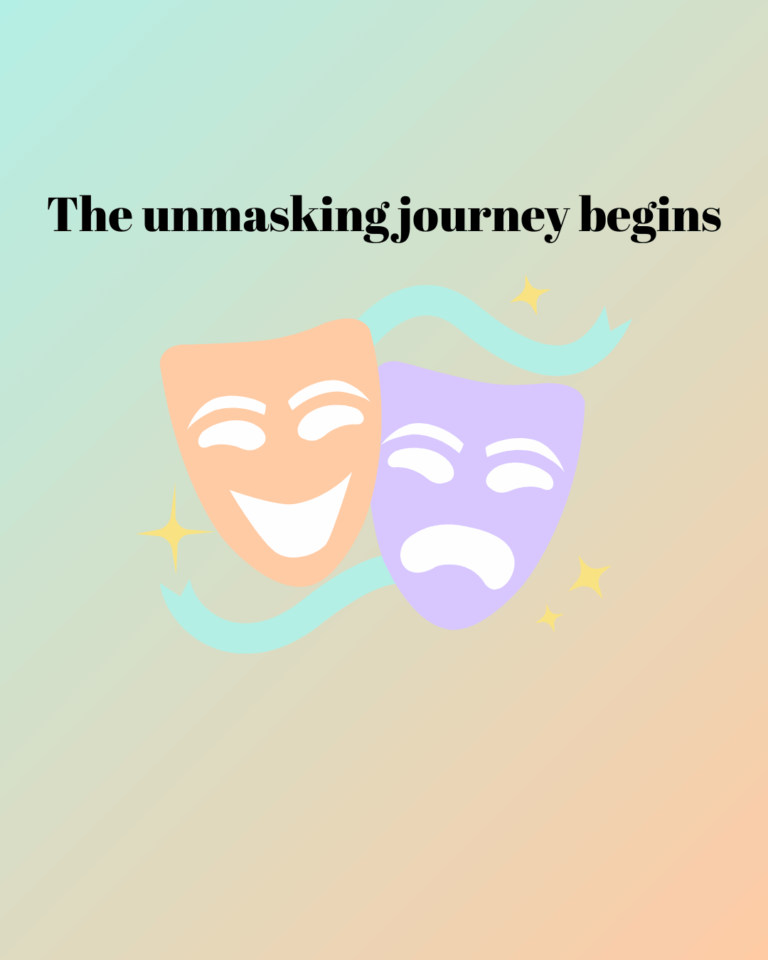Unmasking ADHD and Autism: The authentic you
Probably the biggest part of rewriting my label came from the need to unmask. But that raised an even bigger question: Where does my mask come from, and when do I wear it?
The first part is fairly easy to answer, but painful to pinpoint. My dad doesn’t believe in being neurodivergent, so I learned to hide it—otherwise he’d get mad. My sister told everyone in our city (yes, literally everyone—even strangers on vacations). At school, people knew, and I got bullied daily. Honestly, it would’ve been weirder if I didn’t mask just to survive.
Your story might be similar. Maybe you had to hide yourself to avoid conflict, rejection, or worse. You probably also learned it was safer to act “normal.”
When Do You Mask?
The second part of my question is trickier: when do I mask?
Do I make more eye contact because that’s what’s expected? Do I sit perfectly still so I won’t annoy people? I struggle with this all the time. Which parts of me are survival strategies—and which are just me being me?
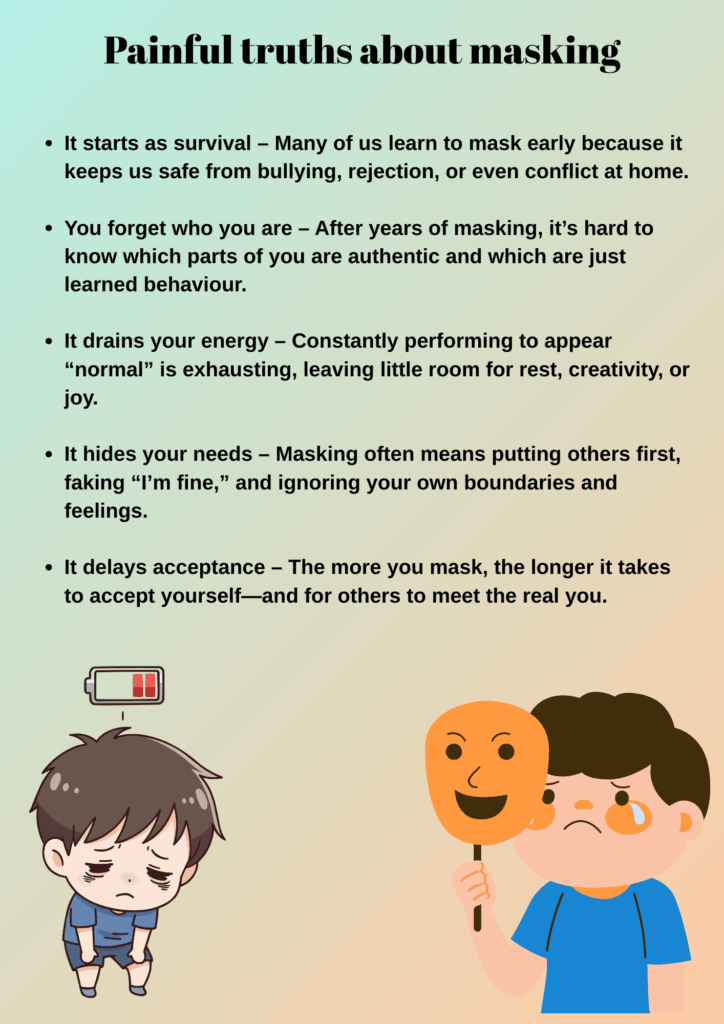
What Is Masking For Me?
Masking is often described as trying to appear more “normal” or neurotypical.
For me, it shows up like this:
- Forcing eye contact while talking
- Holding back my interruptions
- Overexplaining everything I do
- Faking positivity so I look “okay”
The list is actually so long and it will be a bother to read them all. The main point is, it is all hard to hold back. It makes life so exhausting.
Usually I’m okay with friends. But certainly not all the time.
Called Out by a Friend
I often call with a good friend of mine (she’s a pain in the ass—kidding, I love her). She sees straight through me and loves calling me out. Recently, she asked me a question that stung.
I was explaining why I was fine with not being as close with one of our mutual friends. I gave the classic “she’s busy, life happens, I totally understand” explanation. My friend stopped me cold:
“Is this a people-pleasing answer to avoid conflict—or is this truly what you feel?”
Ouch. My instant reaction? Get defensive and overexplain. But 24 hours later, I realized she was right: I was pretending to be okay. (Please don’t tell her—she’ll make me repeat it five times, haha.)
That was my mask in action. Avoiding conflict. Hiding feelings. Pretending.
Why I Learned to Mask
It makes sense when I look back. I lost so many friends over the years. At home, I felt I had to keep everyone happy. Masking became survival.
For me, it’s tied to trauma and RSD (Rejection Sensitive Dysphoria). Therapy helped me see this, but honestly? I’m still working on it.
Learning to Unmask
Unmasking is the hard part. My struggle? I can be blunt—sometimes even hurtful—if I swing too far into “radical honesty.” That doesn’t work with people you love, at school, or at work.
But there’s a middle ground: being truthful without being blunt.
Here’s how I’d reframe the same situation today:
“We talked about it, and she hurt my feelings multiple times. I’m sad we don’t talk as much anymore. She’s busy, but she also makes me feel like I’m walking on eggshells. I don’t like the situation, but I think it’s better this way for both of us.”
That’s way harder to say, but it’s more authentic. It honors my feelings and sets a boundary.
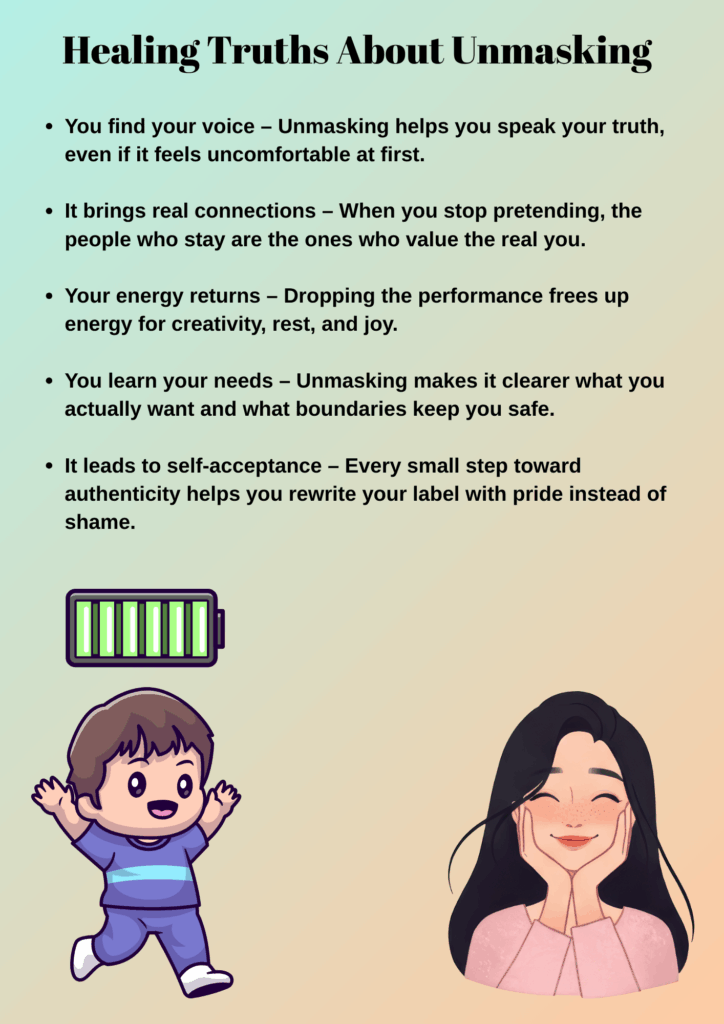
How rewriting removes the mask
Unmasking forced me to look at my labels differently. Instead of overcompensating for others, I started asking:
- What is my truth?
- What are my needs?
- How can I express them honestly, without losing myself?
That’s what rewriting my label is all about. It’s not about fitting in—it’s about finding language and tools to be authentically me.
Why do you mask?
I know I’ll uncover more masks as I go, and I’ll share them along the way.
But I wonder:
- Do you know your masking behaviors?
- When did you first notice them?
- Are you unmasking—and if yes, how?
Tips to Start Unmasking
Unmasking isn’t something that happens overnight. It’s messy, scary, and sometimes uncomfortable. But here are a few small steps that helped me — and might help you too:
- Notice your patterns – Pay attention to when you fake positivity, overexplain, or people-please. Awareness is the first step.
- Check your truth – Ask yourself: Am I saying this to avoid conflict, or because it’s how I really feel?
- Use softer honesty – Practice phrasing that honors your feelings without being harsh, like “I feel sad we don’t talk as much” instead of “it’s fine.”
- Set micro-boundaries – Start small, like saying no to one thing that drains you, or leaving a social event 30 minutes earlier.
- Find safe people – Share your unmasking journey with friends or communities that truly see you. Being real feels easier when you’re supported.
Unmasking isn’t about throwing away every learned behavior. It’s about choosing which parts still serve you — and which parts were only there to keep others comfortable. That’s how I started rewriting my label, and maybe it’s where yours begins too.
Thank you for reading. I truly appreciate you, and I wish you all the courage and luck on your own unmasking journey.
